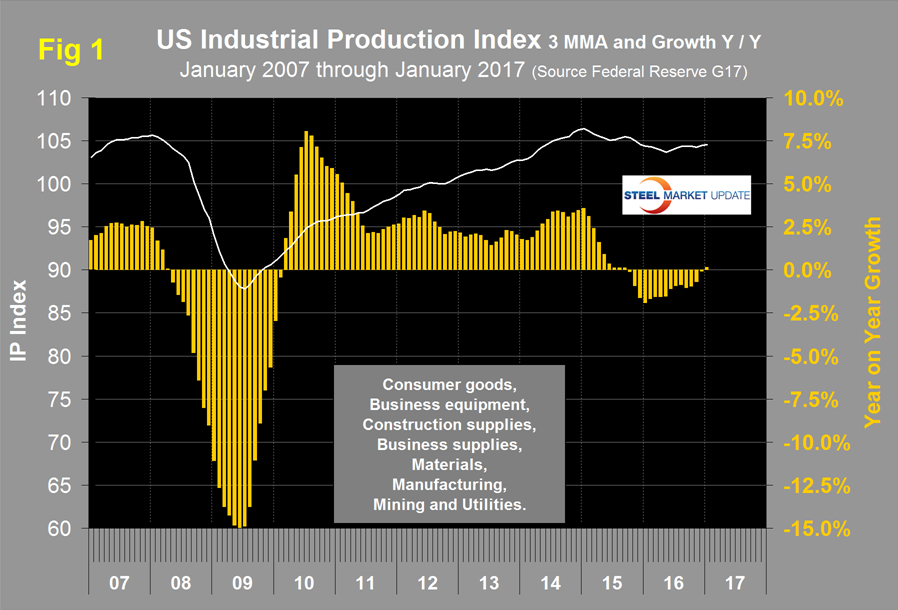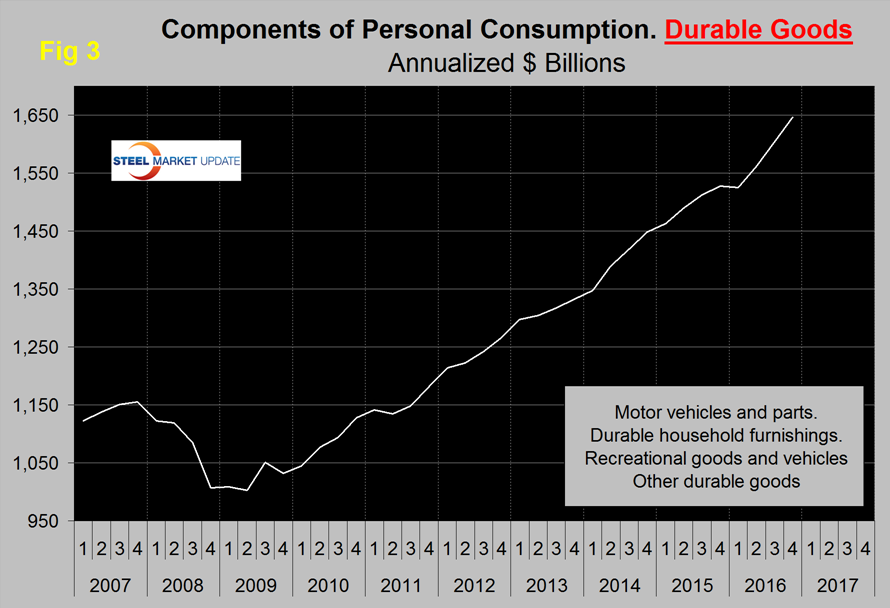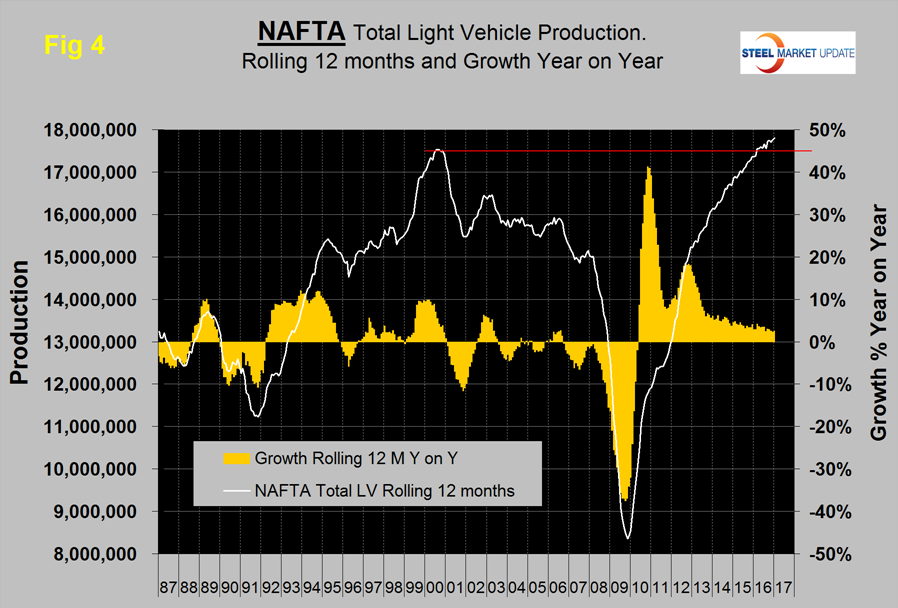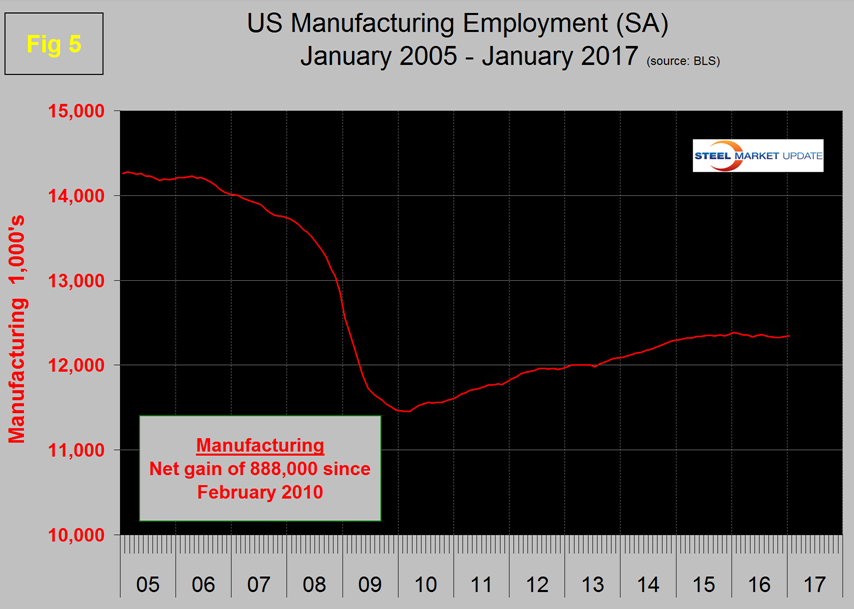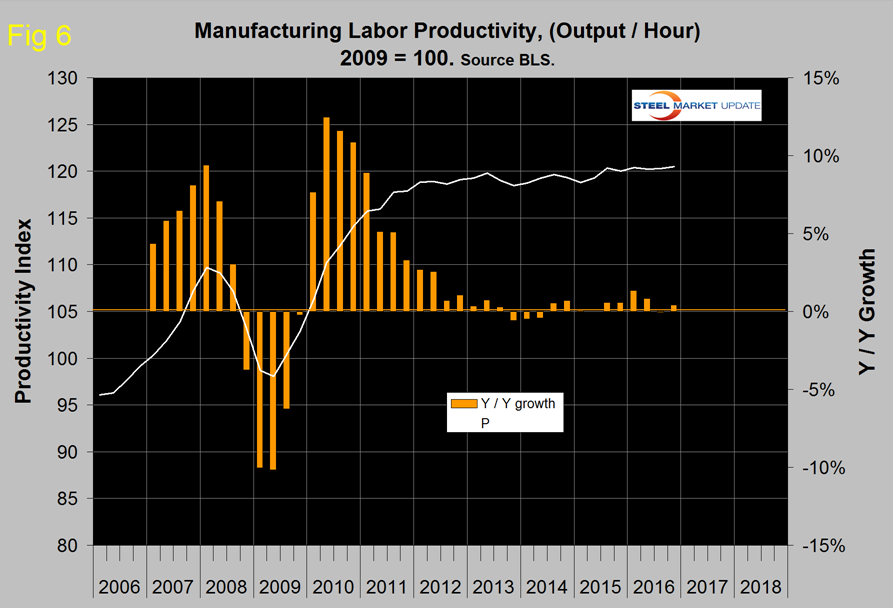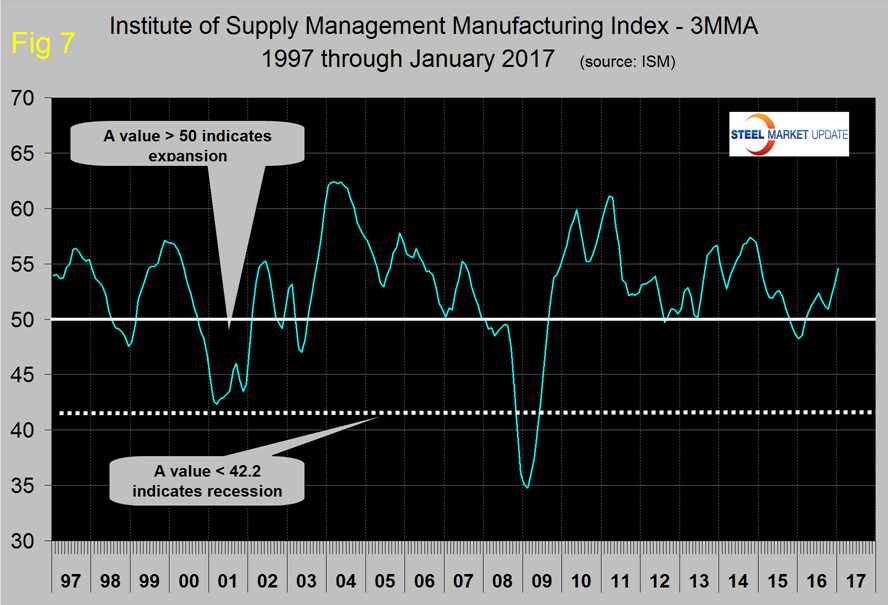Economy

Manufacturing Update in February 2017
Written by Peter Wright
February 24, 2017
This report summarized seven data sources that describe the state of manufacturing in the US. We have reported on most of these separately in our Steel Market Update publications therefore will be brief in this summary. We don’t expect these data sources to all point in the same direction but our intention in summarizing them in one document is to try to get a consensus of the state of this critical steel consumption sector.
The Industrial Production Index
Figure 1 shows the IP index since January 2007 with the year/year growth. The three month moving average (3MMA) declined every month from October 2015 through December 2016 as shown by the brown bars in Figure 1. January this year was the first month of positive growth in the 3MMA since September 2015.
New Orders for Durable Goods
Figure 2 shows the monthly orders for durable goods since January 2010 with the percent change y /y. The abnormal peak of August 2014 was a surge in civil aircraft orders. Apart from that anomaly orders for DGs have been going nowhere for four years.
The Durable Goods Portion of GDP
A subcomponent of the quarterly data for US GDP is durable goods which is part of the personal consumption calculation. It therefore contains no military hardware or civil aircraft data. This is shown in Figure 3 and presumably because of the exclusions just mentioned looks nothing like Figure 2. Durable goods manufactured for personal consumption have been on a healthy growth curve ever since the end of the recession with a slight blip at the end of 2015.
Auto Production
Auto Production in NAFTA is still experiencing a 2.5 percent y/y growth rate which considering that output is at an all-time high is good (Figure 4). The US component is growing at 2.3 percent y/y.
Manufacturing Employment
Manufacturing Employment dived during the recession and gradually improved from the spring of 2010 through 2014. Growth was flat in 2015 and in 2016 lost 23,000 jobs (Figure 5). We know productivity plays a part in these employment numbers so this month we dug into the Bureau of Labor Statistics web site looking for some definitive data on manufacturing.
Manufacturing Productivity
We were somewhat surprised by the result because it wasn’t as good as we expected. Manufacturing labor productivity in the four quarters of 2016 averaged a 0.63 percent gain y/y which was up from 0.31 percent in 2015 (Figure 6).
The ISM Manufacturing Index
The ISM Manufacturing Index is a diffusion index. The Institute of Supply Management states that, “diffusion indexes have the properties of leading indicators and are convenient summary measures showing the prevailing direction of change and the scope of change. A PMI reading above 50 percent indicates that the manufacturing economy is generally expanding: below 50 percent indicates that it is generally declining.” Figure 7 shows the 3MMA of the ISM index from January 1997 through January 2017 and that there was a major improvement since January last year. The index is currently signaling future expansion with a 3MMA value of 54.57 in January which was the best result in the previous 24 months.
SMU Comment: The results are mixed but on balance encouraging. We give the ISM index the most credence and it is also the only leading indicator of the group. The worst indicator is new orders for durable goods which is also of the least interest to the steel industry because it is so swayed by civil aircraft and military orders. Auto assemblies and its supplier industries are doing will in NAFTA and the US is holding its share. Manufacturing employment is declining but we think it likely that this is entirely due to gains in productivity.

Peter Wright
Read more from Peter WrightLatest in Economy

Chicago Business Barometer falls back in April, remains in contraction
The Chicago Business Barometer declined in April, reversing March’s gains, according to Market News International (MNI) and the Institute for Supply Management (ISM).

Fewer manufacturers optimistic about the economy
PMA’s April report shows that only 16% of surveyed manufacturers anticipate an increase in economic activity in the next three months (down from 23% in March)

Architecture billings continue to slide in March
Architecture firms said billings continued to decline in March, according to the latest Architecture Billings Index (ABI) released by the American Institute of Architects (AIA) and Deltek.

Beige Book shows concerns about trade policy
Manufacturing was mixed, but two-thirds of districts said activity was little changed or had declined.

New York state manufacturing index drops again in April
Firms were pessimistic, with the future general business conditions index falling to its second lowest reading in the more than 20-year history of the survey

